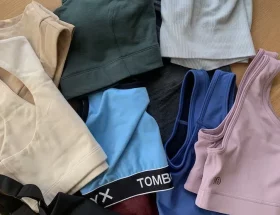Zero Waste Grocery Shopping
Ditching single-use plastics when buying food at the grocery store is gospel when it comes to living a zero waste lifestyle. Though we may enter our local markets with the best of intentions, it can feel like we’re coming up short when we walk away with more plastic-wrapped items than we intended.
But here’s the thing: within these spaces, we have control over what we buy. We may not have had a say in the processes beforehand, but through our purchases, we have collective power. This power can lead to positive change, even beyond our local scope.
Here are a few tips to minimize your waste at the grocery store.
Plan Ahead to Cut Back
While not everyone loves meal planning, some live for the thrill of seeing a fully stocked fridge of carefully-prepared meals. Wherever you fall on the spectrum, food prepping is a good habit to try to get into. At the very least, you should loosely plan what you need before you grocery shop. When you shop intentionally, this helps curb overbuying and reduces food waste, a significant contributor to greenhouse gas emissions.
Buy It in Bulk
After you’ve meal planned and created a quick list of what you’re going to buy, you can hone in on which items you’ll be able to buy in bulk. Products such as flour, grains, nuts, oats, or even chocolate chips can be found in bulk at certain stores. Buying in bulk is an easy way to use less plastic and create less waste.
“Buying in bulk is an easy way to use less plastic and create less waste.”
In addition to regular reusable grocery bags, it’s a good idea to have larger ones for bulk items. Bring enough reusable cotton bags (5–6) for bulk items, plus a few extra to use while you shop. When you do get paper bags from stores, save them for a few more uses instead of tossing them right away. Other hacks include skipping plastic-wrapped bread and asking the baker to put deli counter items straight in a bread bag or a glass container.
Buy From Conscious Brands that Recycle
Regardless of how hard you try, there will be packaged items in stores that you may need to buy. Try and choose wisely by buying from brands that make recyclable or compostable packaging, like Back to Nature and Nature’s Path. Keep in mind that sometimes compostable packaging can only be collected when brought to a designated composting facility. If you’re just getting started, here’s how to check if materials are recyclable and a guide to sustainable in-store snacks.
Create Good Habits and Get Creative
“Set aside your tote bags and reusable bulk bags in an easily accessible spot, so you don’t have to search for them before you leave for the store.”
Develop good habits to make the zero waste process smoother. Set aside your tote bags and reusable bulk bags in an easily accessible spot so you don’t have to search for them before you leave for the store. This can include putting them in your car or near the door.
Before you buy a pantry staple, ask yourself if you can make it at home instead. This applies to salad dressing, bread, hummus, and more. Then, only buy the bulk ingredients you need. Give this guide to homemade kitchen pantry staples a read and see which ones you can create yourself. Be imaginative in your approach instead of seeing it as a chore. Challenge yourself, but don’t set impossible goals.
When trying to shop sustainably, do your best and build upon the smaller actions that you know you can get right almost every time. We can’t totally scrub all waste from our routines but you can certainly do your part and encourage others in the meantime.
RELATED READING

Based in the beautiful city of Portland, Maine, Katherine Oakes Englishman is a writer and yoga teacher with a passion for empowering others to live a more conscious and connected life. She is a contributing writer for Trade, Wayward Collective and pens articles on outdoor travel as the East Coast correspondent at Bearfoot Theory; Katherine is also the former web editor of Pure Green Magazine. Offline, you can find her on a yoga mat or in pursuit of adventure in the wilds of Maine and the neighboring White Mountains.













ynw9jn